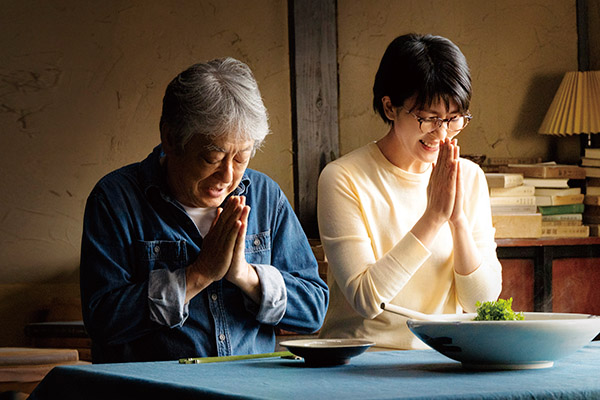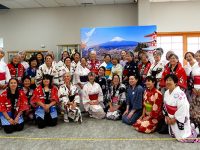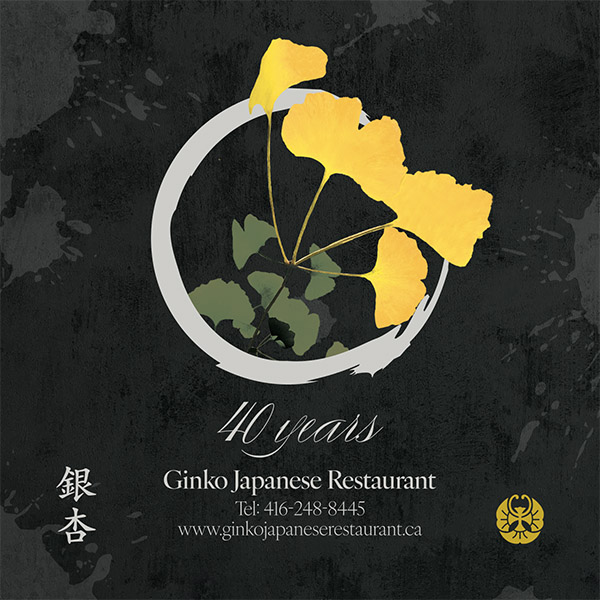In The Zen Diary, Tsutomu’s editor/love interest, Machiko, delights over the foods he makes for her. Tender bamboo shoots simmering in stock, cooked chestnuts, or grilled taro with a little of the peel left on for flavour, still steaming as she takes a bite. “To eat with someone you like is the best,” says Tsutomu.Kenji Sawada as Tsutomu Mizukami and Takako Matsu as Machiko in director Yuji Nakae’s The Zen Diary. Photo credit: Momo Films.
The audience shares Machiko’s delight as she savours each meal—mixed with a bit of jealousy—for foods they can only enjoy with their eyes.
And that is what the film is: a feast for the eyes. Told through a slow and quiet pace, The Zen Diary is a beautiful meditation on the natural seasons of life, reflected through the changing seasons and the different foods they provide.
Cooking these scrumptious meals is reclusive essayist Tsutomu Mizukami (Kenji Sawada), who lives deep in the Shinshu mountains of Nagano with his dog, Prickly-ash, and the ashes of his late wife, Yaeko, who died 13 years earlier. Tsutomu’s story moves forward through the seasons between and beyond summer, fall, winter, and spring, each bringing new vegetables to plant, tend to, harvest, forage, preserve, and cook. Content with his routines, he is occasionally interrupted by his editor/love interest Machiko (Takako Matsu), who pesters him for a manuscript and savours his food as he savours her company.
Tsutomu’s skills and knowledge for cooking, gardening, and foraging come from his time as a live-in apprentice at a Zen monastery in Kyoto while he was a preteen. Now an old man, Machiko urges him to write a book about Zen cooking, which he does over the year in the film. As he writes, we hear his reflections on the different harvests of the season, the cycle of planting and harvesting, food prepping and pickling.
The script is adapted and based on last essayist Tsutomu Mizukami‘s 1978 non-fiction book by screenwriters Tomu Uchida and Yuzo Kawashima. While slow in pacing and plot, director Yuji Nakae (Fugitive from the Past and The Temple of the Wild Geese) creates a film that is a visual delight and a treat to audiences’ eyes and souls, a reminder of what it’s like to live in nature, smell the earth and savour the richness of life.
The filming schedule spanned an unconventionally long 18 months to truly and fully capture all 12 seasons shown in the film and capture the theme of eating from the earth. To create the dishes, the film crew grew the vegetables that actor Kenji Sawada used to cook in the film.
While Tsutomu seems confident in the life cycle of nature, the seasons, and the plants around him, he is stuck, unable to release his wife’s ashes or face his mortality as an aging man. Tsutomu is lulled into the reassuring repeating natural cycle of each season until he is confronted with death again and realizes he is afraid of letting go. While we will all eventually reach our natural ends, we can be comforted with the knowledge that the seasons will continue to change and life goes on.
***







 27 Sep 2023
27 Sep 2023
 Posted by Kelly Fleck
Posted by Kelly Fleck 














